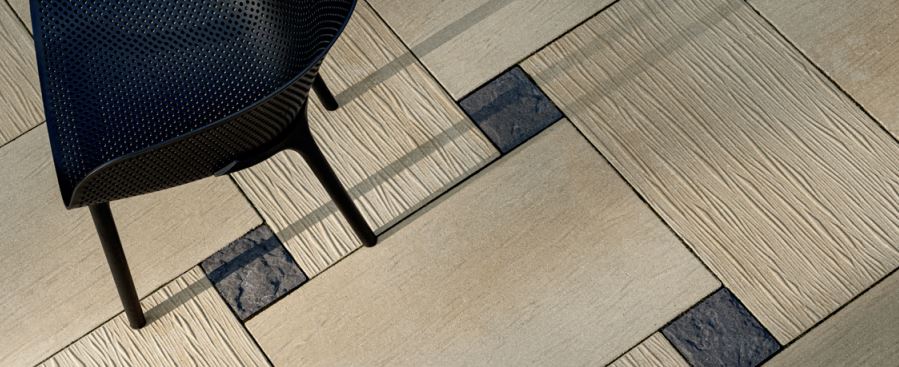EFFLORESCENCE AND WHITE MINERAL DEPOSIT
Efflorescence is a whitish residue that sometimes appears on
the surface of concrete products.
EFFLORESCENCE CAN OCCUR A FEW DIFFERENT TIMES:
Present on the pallet upon delivery,
Immediately following installation,
A few weeks after installation,
A few months after installation.
It may appear randomly or in certain areas and will be more pronounced on dark colored pavers and walls. The white haze may give the impression that the color is fading. When wet, the white disappears, and the color of the pavers and walls is enhanced. When dry, the white haze reappears.
Occasionally, the salts from : cement, water, aggregate, and sand (concrete) , bedding, base, and soil that are embedded are dislodged by water and transported (via vapor pressure or capillary action) to the surface where water evaporates, and salts are deposited. The deposited salt will dissipate naturally and weather and traffic off.
It is common in concrete and other masonry products that contain cement. Typically, efflorescence will stop developing in approximately 90 days but could take 18 to 24 months after the manufacturing process. The concrete is experiencing a natural process which is not harmful to Techo-Bloc products nor is it a defect.
There is no reason to be concerned that pavers and walls are damaged or defective. The concrete products are experiencing a natural process. Some projects experience this more, some experience it less. It is a condition in all cement-based and many other paving products.

TESTING FOR EFFLORESCENCE
A way to test for efflorescence is to wet the surface. If the white residue disappears but reappears when dry, it is water soluble
efflorescence. If the deposit is still visible when wet, it may be a different type of mineral deposit like lime or calcium. Those
types of mineral deposits (although not detrimental to the product) should be cleaned by or professional grade product.
RECOMMENDATIONS
Most cleaners contain acid and detergents, be sure to follow all directions and environmental regulations. Careless or improper cleaning can result in injury, damage and discoloration of the concrete. Always conduct a test in an inconspicuous area or a leftover piece before applying any cleaner to the site. If uncomfortable cleaning this yourself, hire a professional contractor.
Polymeric sand haze commonly called “poly haze” is often confused for efflorescence. Poly haze is the residue of polymer based jointing sand left on the surface of the pavement typically due to moisture on installation, improper application, or inadequate removal. To determine if it’s poly haze use boiling hot water from stove or coffee maker on an inconspicuous unit. The stain will largely dissipate.

